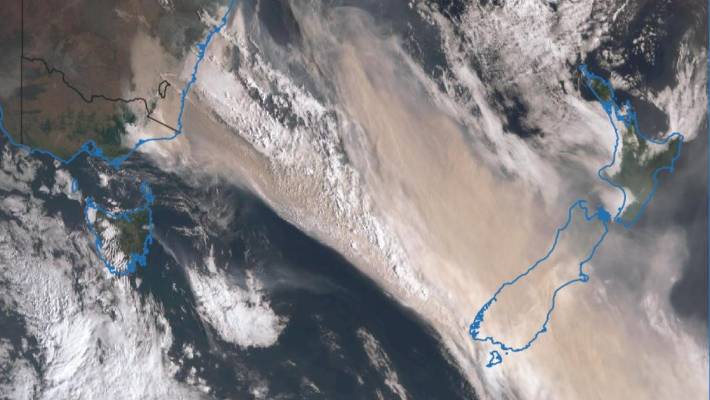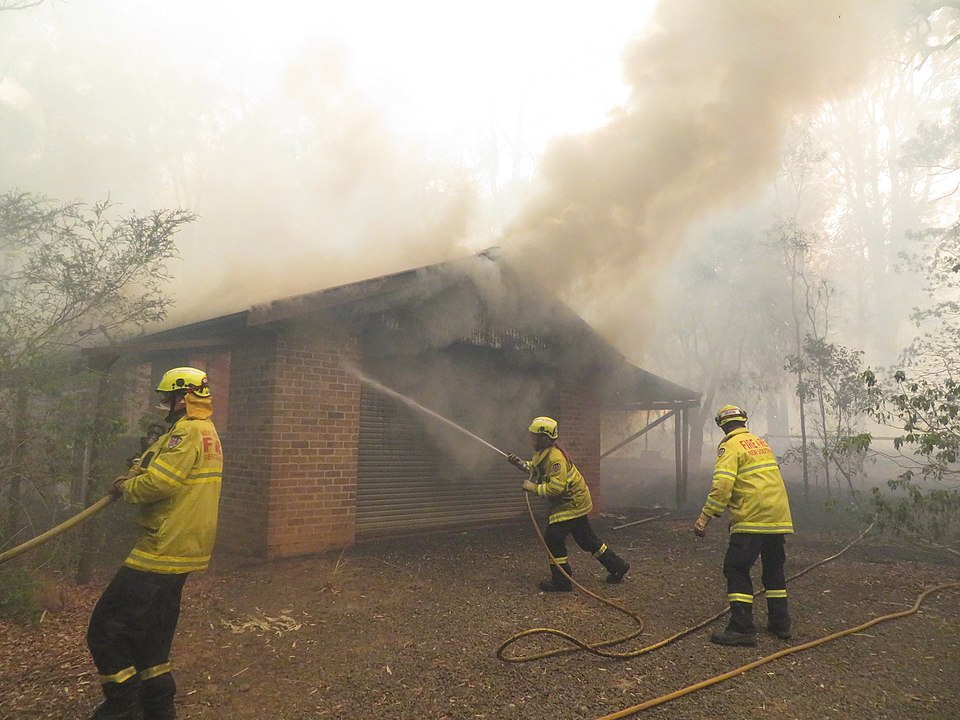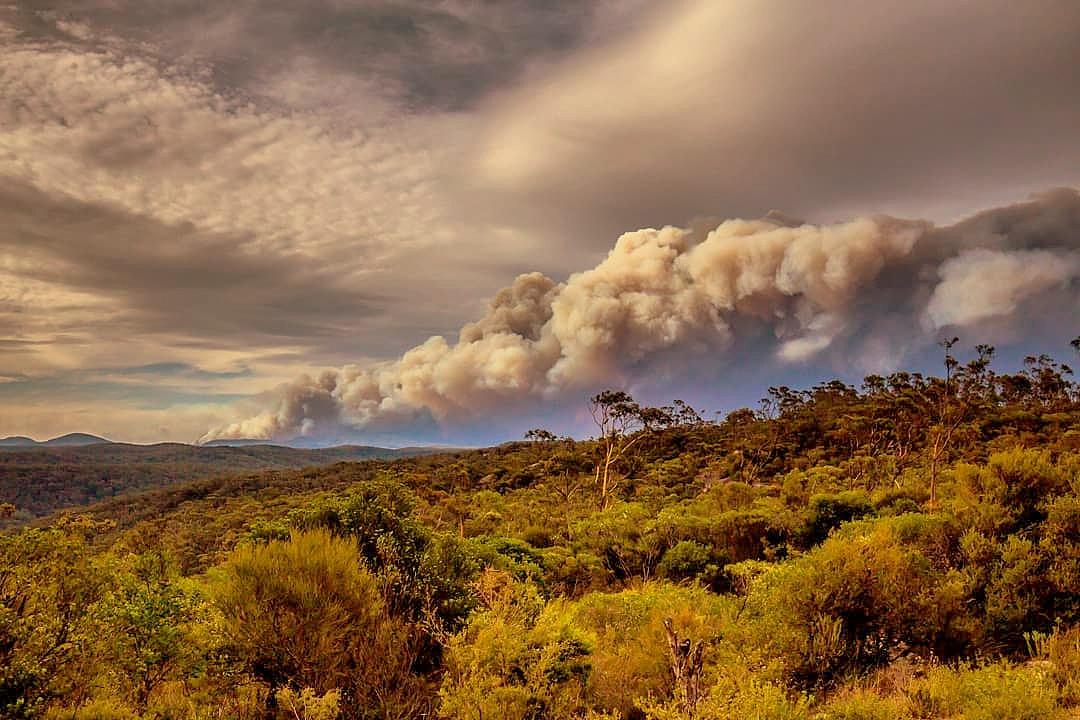Living on the east side of an outer Melbourne suburb, in the first week of January 2020 clouds of smoky haze drifted past my nose many times. The smoke came from the massive Australian bushfires burning in the country areas of both New South Wales and Victoria. To date, the haze is still visible over the city and on the outskirts of Melbourne. On December 31, the smoke even drifted to New Zealand, tainting its glaciers a brown color. That is when I learned 13 million hectares of Australian land had burned.

The smoke is a small thing to forbear compared to the lost homes (over 3,000), bushland, and wildlife. Firefighters, both male and female, most of them volunteers, risked their lives to rescue people and animals. A 28-year-old volunteer fireman, whose wife is expecting a baby in May, died when his truck was rolled by a fire tornado. People were reported missing; however, most were gradually found. To date, 33 people have died from the fires.

Social media played a great role in spreading the message that help was needed. Organizations like the Red Cross, Food Bank, and the Salvation Army helped by collecting food, clothing, and funds. Celebrities donated large amounts of money and farmers in Western Australia and Victoria moved truckloads of hay to New South Wales farms for surviving stock. The news showed horrific images taken by firemen as they passed one of the fires in their truck, filming it with a mobile phone.
Many people risked their lives to save animals in need of help, like a lady from New South Wales who rescued a koala before fleeing to safety. After fires ravaged the land, a young man, Patrick from Mallacoota, walked through the burned trees and ash looking for surviving koalas. Unfortunately, an estimated 1 billion native animals perished.

Bush fire prevention and drought
Summer in Australia brings heat waves, with bushfires burning some parts of the country. Not enough has been done to prevent the spreading of the fires and prepare firefighters for this year. The state and federal governments should have done much more, such as clearing dead wood and other debris that fuels these fires.
After the European settlement of Australia in 1788, not many bushfires occurred, while fires have been more frequent from the 1990s to 2020. Australia’s drought today has been endured for many years in many parts of the country. No rain to rejuvenate the land and the dry bushland makes it an easy target for fires to start.
The Australian aboriginal people lived with their environment. Burning off one part of the land kept the bushfires under control, with the fire cracking native seeds and the rain nourishing regrowth of vegetation and food. This kind of burning-off is still being practiced.
In 2018, the Queensland Fire Service made prevention burns. Burning off was cut short with the fire season starting in early July 2019. The Liberal government made funding cuts by the millions to the Australian Fire Service in the 2019 and 2020 budgets. The New South Wales Frontline Fire Service was abandoned and left under-resourced.
In Victoria between 2018 to 2019, the DELWP completed 251 planned burns covering 130,044 ha along with 246,396 ha of approved public land when the weather conditions were suitable. At Cann River where fires were and are now a minor menace, farmer Graeme Connelly said: “The community have had no say in planned burns and have been waiting since 1983 for a planned burn.”
NSW Rural Fire Service (RFS) Inspector Ben Shepherd said: “I can confidently say the majority of the larger fires that we have been dealing with have been a result of fires coming out of remote areas as a result of dry lightning storms.”
Many of Australia’s waterways don’t flow naturally anymore and water is held back in places and controlled, diverting river water from its natural path. The Darling River is situated mostly in New South Wales and it is one of Australia’s main rivers. The people who rely on this river for water are now describing their river as being raped.

The ecosystem along the Darling River (a 1,500-kilometer-long river) is dying as the land is cleared for the building of dams. Cubby Station is one farming company that has created enormous dams, enough to hold the same amount of water as the Sydney Harbour. Norman Farms illegally built a huge dam and their neighbor talks about the river system not being the same since the dam was built. No water flowing to fill streams from the rivers, drying out New South Wales.
The whole of New South Wales is in a devastatingly poor way with its north in a severe drought and from the Victorian border along the coast to Queensland, with forests of burned trees and many destroyed houses. Australia’s capital, Canberra, was surrounded by bushfires also, but the fires didn’t reach the city or Parliament House. Victoria’s share of bushfires was scattered across the state, with serious fires impending on East Gippsland.

Fires burn where the bullet train is proposed
The idea of a connection between cities — Brisbane, Sydney, Canberra, and Melbourne — with a bullet train has been planned for a long time. There are some concerns about properties that were damaged by the fire situated on the Clara Bullet Train plans. When building starts, these properties may not be compensated for the true amount of their land, because the land has been burned.
Some relief from rain
A bit of rain and we hoped, the rain would fall to East Gippsland to put out the fire. The rain did not put out all the bushfires. The news weather forecast gave a prediction of a storm. A fireman explained that a storm doesn’t always help as lightning from a storm can start more fires and make the ground muddy, making it hard to get close to the fires in the bushland.

On Sunday, January 20, the storm came and a freak act from nature occurred as hail the size of golf balls to small pebbles pelted down, along with a huge downpour of rain. House skylights were broken and cars were dented. In the coming days, fine red dust followed and blanketed Melbourne, especially the swimming pools.

It is indeed strange weather, from hot days with fires to days followed by ice, a downpour of rain with strong winds, and lightning! It is now February and bushfires have been put out in many places and are no longer a danger to communities.
We all need to be more observant of what is happening around us. Perhaps there is something we can all do to improve the environment and the world we live in.
A sincere thanks to all firemen and women, and also a special thanks to those helping in some way the people in Australia who have lost their homes and family members.








